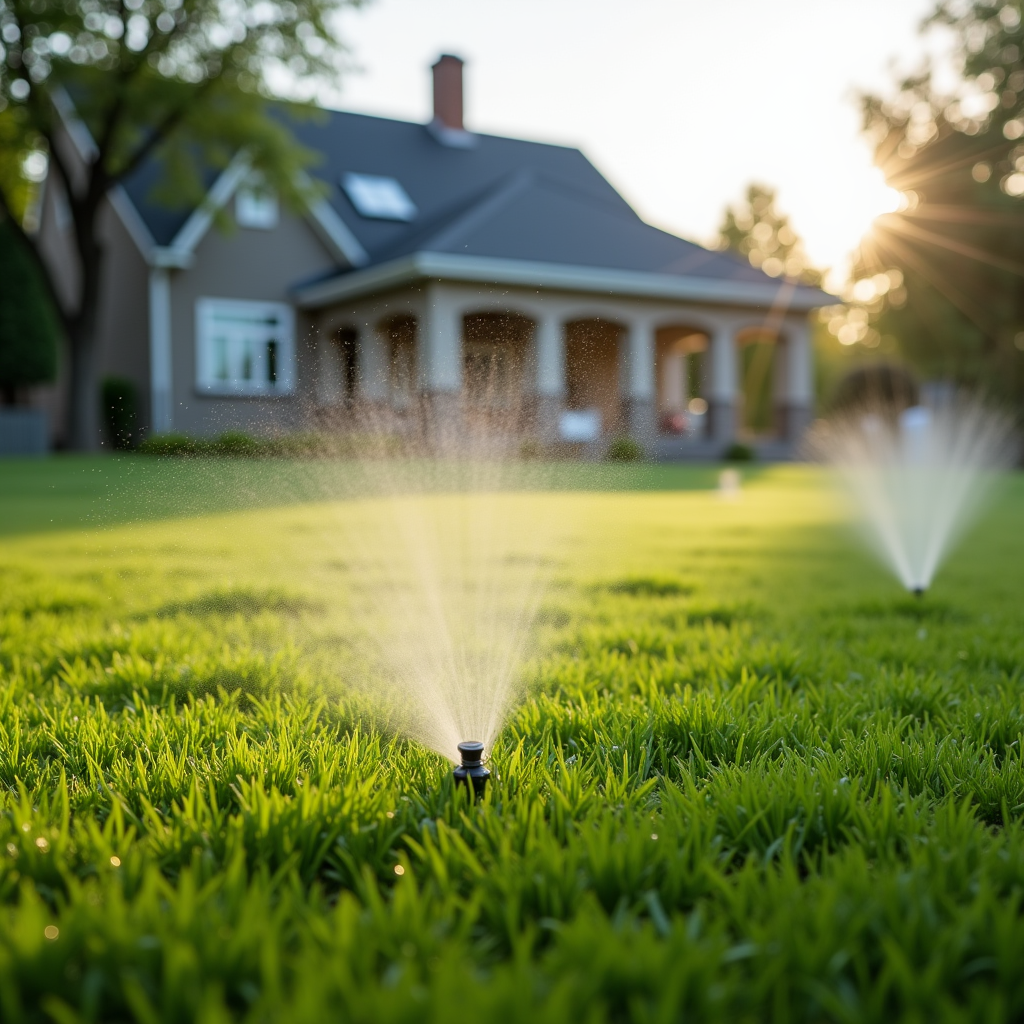Introduction
When it comes to maintaining a beautiful outdoor space, lawn care plays a crucial role. A vibrant lawn not only enhances the beauty of your property but can also increase its value. However, many homeowners feel overwhelmed by the complexities of lawn care. Where do you start? What equipment do you need? And how can you keep your grass lush and healthy all year round? In this comprehensive guide, we’ll walk you through everything from basic lawn maintenance techniques to advanced care tips that will turn your yard into a green oasis.

So grab your gardening gloves and let’s dig deep into the world of lawn care!
Lawn Care: The Foundation of a Healthy Yard
What is Lawn Care?
Lawn care refers to the process of maintaining and improving the appearance and health of grass-covered areas. It involves a variety of practices including mowing, watering, fertilizing, aerating, and pest management.
Why is Lawn Care Important?
Healthy lawns provide numerous benefits:
- Aesthetic Appeal: A lush, green lawn enhances the beauty of your home. Environmental Benefits: Lawns improve air quality and reduce soil erosion. Functional Space: They provide areas for recreational activities.
From Thatch to Turf: Understanding the Basics of Lawn Care
What is Thatch?
Thatch is a layer of organic material that accumulates on the soil surface under your grass. While some thatch is normal, excessive buildup can lead to poor airflow and water retention issues.
How Does Thatch Impact Your Lawn?
Excessive thatch can create an environment for pests and diseases. It can also hinder nutrient absorption by preventing fertilizers from reaching the soil.
Signs You Have Too Much Thatch in Your Lawn
Grass appears brown or unhealthy. Water doesn't soak in after heavy rain. Soil feels spongy when walked on.Lawn Care Equipment: Essential Tools for Success
Basic Lawn Care Tools You Need
Lawn Mower: A vital tool for keeping grass at an ideal height. Rake: Great for collecting leaves and debris. Aerator: Helps relieve soil compaction. Fertilizer Spreader: Ensures even distribution of nutrients. Sprinkler System: Essential for maintaining proper moisture levels.Advanced Equipment for Enthusiasts
For those looking to take their lawn care game up a notch:
- Dethatcher: Removes excess thatch effectively. Soil Tester Kit: Assesses nutrient levels in your soil. Power Rake: Great for larger areas with tough thatch layers.
Understanding Soil Types and Their Impact on Lawn Care
Different Soil Types Explained
Clay Soil: Heavy and dense; retains moisture but drains poorly. Sandy Soil: Drains quickly; may require more frequent watering. Loamy Soil: A balanced mix; ideal for most lawns.How to Choose Grass Type Based on Soil
Knowing your soil type helps determine which grass varieties will thrive in your yard:
- Clay soils favor tall fescue or Kentucky bluegrass. Sandy soils benefit from perennial ryegrass or fine fescues.
The Importance of Watering in Lawn Care
How Often Should You Water Your Lawn?
Generally speaking, lawns require about 1 inch of water per week, either from rainfall or irrigation.
Best Practices for Watering Your Lawn
- Water early in the morning to minimize evaporation. Use a soaker hose or sprinkler system for even distribution. Avoid overwatering to prevent fungal growth.
Mowing Techniques That Promote Healthy Grass Growth
When Should You Mow Your Lawn?
Most homeowners should mow their lawns every 1–2 weeks during growing season.
Mowing Height Matters!
Different grasses have different optimal heights:
- Bermuda grass should be mowed at 1–2 inches Fescue grass thrives when cut at 3–4 inches
Understanding Fertilization and Nutrient Management
Why is Fertilizing Necessary?
Fertilizers supply essential nutrients http://messiahsbmc826.timeforchangecounselling.com/exploring-community-greenhouses-and-their-impact-on-local-landscaping-culture like nitrogen, phosphorus, and potassium that promote healthy growth.

Types of Fertilizers
Synthetic Fertilizers Organic Fertilizers Slow-release vs Fast-release OptionsAeration Techniques for Optimal Root Development
What is Aeration?
Aeration involves perforating the soil with holes to allow air, water, and nutrients to penetrate deeper into the root zone.

When Should You Aerate Your Lawn?
Typically done in spring or fall when grass is actively growing.
Pest Control Strategies for a Healthy Lawn
Common Pests Affecting Lawns
Grubs Chinch Bugs ArmywormsNatural Pest Control Methods
Consider beneficial insects like ladybugs or use organic pesticides as alternatives.
Managing Weeds Effectively
Why Are Weeds Bad For Your Lawn?
Weeds compete with your grass for nutrients, water, and sunlight leading to unhealthy growth conditions.
Effective Weed Control Methods
Utilize mulching techniques or herbicides specifically designed for weed management without harming grass.
Seasonal Lawn Care Tips
Spring Preparation
Begin fertilization as temperatures rise; consider overseeding if necessary.
Summer Maintenance
Increased watering frequency may be required; keep mowing height higher during heat waves.
Fall Cleanup Essentials
As temperatures drop:
- Rake leaves regularly Apply pre-emergent herbicides
Winterization Techniques
Prepare your lawn for winter by following these practices:
Last mow before frost hits Apply winter fertilizerCommon Lawn Diseases To Watch Out For
Be vigilant against diseases such as:
- Dollar Spot Brown Patch Powdery Mildew
FAQs About Lawn Care
1. How often should I water my lawn?
You should typically aim for about 1 inch per week through rainfall or irrigation practices!
2. What’s the best time to mow?
Early mornings are generally best—when temperatures are cooler!
3. Is it better to use synthetic or organic fertilizers?
It depends on personal preference! Organic options are often safer but may require more frequent application than synthetics!
4. How can I tell if my lawn has too much thatch?
If your grass looks unhealthy despite good care—or if water isn’t soaking into the ground properly—you might have a thatch problem!
5. Can I aerate my lawn myself?
Absolutely! Rent an aerator from local garden centers or consider hiring professionals depending on lawn size!
6. Are there any natural methods for pest control?
Yes! Beneficial insects—like ladybugs—can help manage pest populations naturally!
Conclusion
Caring for your lawn can be both rewarding and challenging; however, with the right knowledge—from understanding what thatch is to knowing how often to mow—you can create an enviable outdoor space that will make both neighbors and passersby stop in awe! Remember, consistent care leads not only to visual appeal but also promotes healthier environments around us all! So get out there—roll up those sleeves—and transform your grassy patch into something extraordinary through effective lawn care practices!
With this extensive guide titled "From Thatch to Turf: Understanding the Basics of Lawn Care," you're now equipped with all you need—from tools to techniques—to cultivate a thriving landscape right at home! Happy gardening!